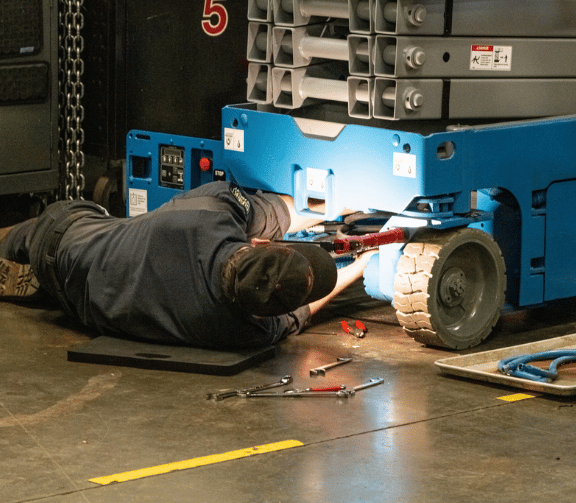Find Expert Lift Maintenance Services: Ideal Lift Repair Companies Near Me
Find Expert Lift Maintenance Services: Ideal Lift Repair Companies Near Me
Blog Article
Comprehensive Guide to Elevator Solutions and Their Maintenance
Navigating the detailed globe of elevator systems and their maintenance is a task that requires accuracy and knowledge. From the different sorts of elevator systems being used to the careful adherence to safety and security guidelines, the maintenance of these vertical transport tools is a complex undertaking. As buildings rise greater and modern technology developments, the need for a thorough understanding of lift systems becomes progressively essential. Join us as we untangle the intricacies of elevator upkeep, exploring usual issues, finest methods, and innovative innovations that form the modern landscape of vertical transport.
Kinds Of Lift Equipments
Elevator systems can be found in numerous types, each designed to match particular structure needs and individual needs. One of the most common types consist of hydraulic elevators, traction lifts, machine-room-less elevators, and vacuum lifts. Hydraulic lifts are excellent for low-rise structures and make use of a hydraulic piston to move the lift cars and truck. Grip elevators, on the other hand, are extra fit for high-rise buildings and utilize steel ropes and counterweights to relocate the car. Machine-room-less elevators are a space-saving option as they do not call for a separate machine area for the lift machinery. Vacuum elevators, an extra contemporary development, use air pressure differentials to relocate the car within a clear tube.
Each kind of elevator system has its own advantages and negative aspects, making it important for structure owners and designers to meticulously consider their certain demands before choosing one of the most suitable choice. Factors such as building height, room availability, power performance, and budget plan constraints all play a significant function in determining the most effective elevator system for a certain building.
Usual Maintenance Concerns
Regular upkeep of elevator systems is necessary to ensure smooth operation and prolong their life-span. Despite regular maintenance, lift systems can still encounter typical upkeep concerns that require to be promptly resolved to stop interruptions in service. Among the most constant concerns is door breakdowns. Elevator doors might obtain misaligned, causing concerns with opening and closing effectively. This can create delays and safety risks, calling for instant focus from upkeep professionals. One more typical problem is connected to the elevator's leveling accuracy. Passengers may experience tripping risks and pain if the elevator doesn't straighten correctly with the floorings. Additionally, concerns with the control system, such as sensor problems or electric concerns, can create the elevator to breakdown or stop working altogether. Routine assessments and proactive maintenance can assist identify and fix these common upkeep problems before they rise and impact the general efficiency of the lift system.
Safety Regulations and Compliance
Sticking to rigid safety and security guidelines and ensuring compliance with market criteria are extremely important for maintaining the operational stability of elevator systems. Lifts undergo an extensive set of security policies to secure travelers, upkeep employees, and the public. Governing bodies such as the Occupational Safety And Security and Health Administration (OSHA) in the USA and the European Lift Organization (ELA) in Europe establish guidelines that cover different elements of elevator design, installation, maintenance, and procedure.
Conformity with these policies is not just a lawful demand yet additionally a moral responsibility for structure owners and elevator upkeep business. Routine inspections, upkeep checks, and adherence to security protocols detailed in the policies are necessary to ensure the effective and safe operation of elevator systems.
Ideal Practices for Upkeep

Another crucial ideal practice is to quickly resolve any uncommon sounds or documented problems to stop additional damage. Implementing a positive strategy to maintenance can conserve time and money in the future by avoiding pricey repairs or replacements. Structure owners need to additionally take into consideration investing in innovation upgrades to enhance the effectiveness and safety and security of their elevator systems. By following these finest methods, lift systems can run efficiently and safely, giving dependable upright transportation for owners.

Advanced Technologies for Efficiency
Carrying out sophisticated modern technologies in elevator systems can significantly boost operational performance and traveler experience. These systems allow passengers to input their wanted floor before getting in the lift, which then directs them to the most reliable cars and truck.
Moreover, the combination of wise sensing units and anticipating upkeep capacities has actually revolutionized elevator maintenance. These sensors can spot prospective issues prior to they intensify, making it possible for aggressive maintenance interventions and minimizing downtime. In addition, using energy-efficient components and regenerative drives linked here helps reduce power usage and operating expense in lift systems.
Furthermore, the execution of cloud-based monitoring and remote diagnostics permits for real-time tracking of elevator performance and prompt troubleshooting of any kind of breakdowns. This proactive strategy not only enhances system integrity but additionally boosts the overall user experience by making certain undisturbed and smooth lift operations.
Conclusion
Finally, recognizing the various sorts of elevator systems, typical upkeep problems, security regulations, finest upkeep methods, and advanced innovations for effectiveness is critical for making sure the smooth procedure of elevators. By adhering to safety regulations and implementing best techniques for maintenance, building owners can lengthen the life expectancy of their lift systems and ensure the safety of passengers. It is necessary to remain upgraded on the most click this site current improvements in elevator modern technology to improve effectiveness and integrity.
The most typical types include hydraulic elevators, grip lifts, machine-room-less elevators, and vacuum cleaner lifts. Hydraulic lifts are suitable for low-rise buildings and utilize a hydraulic piston to relocate the lift car. Machine-room-less elevators are a space-saving option as they do not require a different equipment space for the elevator machinery. Normal evaluations and aggressive maintenance can assist recognize and settle these usual upkeep concerns before they escalate and affect the total efficiency of the elevator system.

Report this page